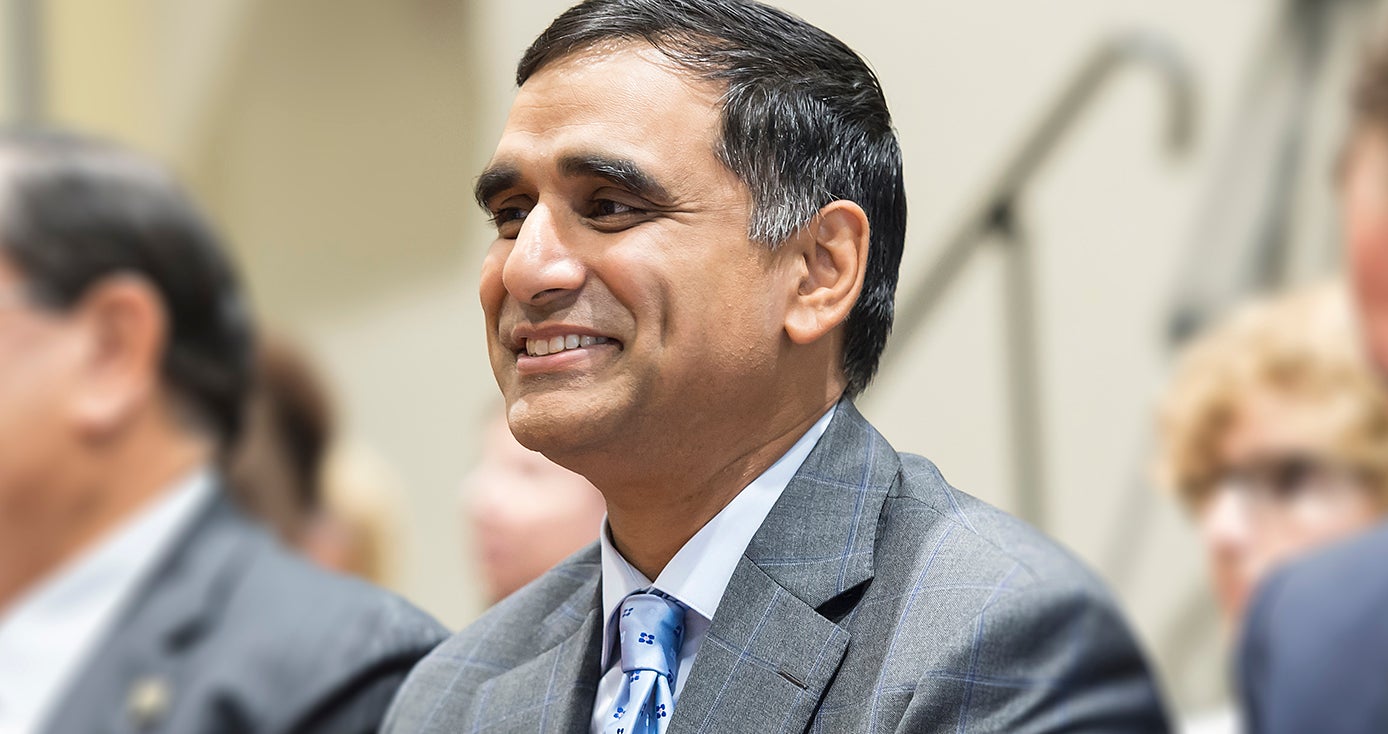
Subscribe to Pittwire Today
Get the most interesting and important stories from the University of Pittsburgh.Budget Emphasizes Pitt’s Core Mission, Safety
On July 15, the University of Pittsburgh Board of Trustees approved $2.4 billion in total operating and capital budgets for fiscal year 2021, an amount in line with last year’s budget.
According to Hari Sastry, senior vice chancellor and chief financial officer, the budget recognizes the tremendous challenges associated with the COVID-19 pandemic while enabling the University to fulfill its mission of academic excellence, research, economic development and community engagement.
“While many factors were considered in making budget decisions this year, two essential elements were the health and safety of our campus community and positioning Pitt to achieve its mission now and in the future.” said Sastry.
Supporting health and safety
Sastry said the University experienced more than $50 million in net costs and lost revenues related to COVID-19 as of the end of the fiscal year in June. Expenses included room and board refunds, the cost of closing parts of campus as well as moving to online learning, study abroad cancellations and the purchase of COVID-19 related supplies.
Pitt received a total of $21.3 million from the federal COVID-19 relief bill. The first half of those funds provided direct financial support to approximately 11,000 students. The remaining funds were used offset Pitt’s institutional costs related to remote education, classroom safety and physical distancing.
“While we appreciate the support from the CARES Act, this funding is not nearly enough to offset the costs incurred to date or what we anticipate in the future,” Sastry noted.
Positioning Pitt for the future
To develop this year’s budget, Sastry said the focus was on financially supporting the University’s mission of academic excellence and research. In the current economy, Pitt chose to hold tuition and room and board levels flat with the previous academic year, as well as maintain its commitment to the Pitt Success program to expand affordability and access to a college education.
Overlaying that were budget considerations related to COVID-19—specifically, areas where revenue would be lower due to the pandemic such as retail sales in campus stores, parking and special events, and where expenses would be higher as the University invests in technology and training to build the Flex@Pitt teaching model, as well as taking the necessary steps to allow students to return as safely as possible to campus this fall.
For example, the University will spend more than $20 million to de-densify student housing by renting nearby hotel rooms as well as providing additional security and shuttle transportation.
Sastry said the budget formulation process is highly collaborative, and he said he valued “the input of our shared governance committees and budget planning partners as we work together to create sustainable outcomes in support of the University.”
He also noted that this year’s budget includes implementing a permanent budget reduction of 3.7% on average across the University primarily as a result of net tuition losses, increases in financial aid and increases to healthcare costs. It also calls for implementing temporary, one-time budget reductions of 5% on average across the University mainly to account for restart costs, including testing, tracing, expected tuition loss from international students and technology upgrades.
Sastry said that reductions will be determined on a unit-by-unit basis, rather than through a centralized process. “The deans and Responsibility Center leadership know their areas the best. We want to accomplish these reductions carefully with as little impact as possible to delivering on our mission.”
For one-time savings, the emphasis will be to first review costs that are naturally lower as a result of our current operational posture, such as reduced expenditures on travel and office supplies.
For permanent reductions, the emphasis is on operating more efficiently across the University and finding new ways to deliver services as well as or better than before. One recent example was the merger of Financial Information Systems, which had reported to the CFO’s office, with Pitt IT, creating greater efficiencies.
The announcement of voluntary retirement programs for faculty and staff also will enable departments to review headcount and rethink organizational structures, roles, processes and policies to support mission priorities.
Sastry said members of the CFO’s office “will be working with University Responsibility Centers to find efficiencies while preserving strategic priorities as the centers work to complete their budgets by early September.”
Endowment as a funding source?
Even with the budget reduction efforts, Sastry said the University will need to rely on contingency reserves to balance the budget. He said this is preferable to other options, such as using Pitt’s endowment as a potential funding source.
He explained there are many reasons that preclude this as an option. Under state law, the endowment cannot function as an emergency fund, and the University is also legally bound to honor agreements with donors, who can specify how Pitt uses their gifts. Sastry further noted that the Board of Trustees is obligated to preserve the institution’s long-term financial health.
Financial aid programs, including Pitt Success, are the single largest items funded through the consolidated endowment fund. “Drawing down this fund could irreversibly shortchange future students,” Sastry said.
He acknowledged this will be a challenging year at Pitt. “I know we will rise together to meet the demands of this time.”


